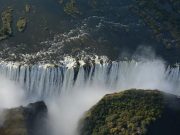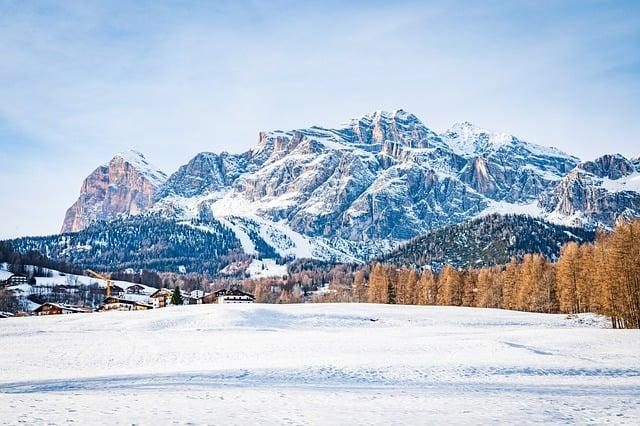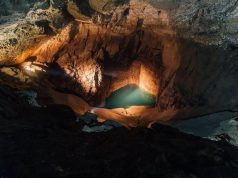In the vast and diverse landscapes of Africa, where the rhythm of life is set by the untamed wilderness, a silent crisis is unfolding. Majestic elephants roam under the watchful gaze of acacia trees, lions prowl the savannas with regal authority, and rhinos graze the grasslands—yet, many of these iconic species are perilously close to vanishing forever. As the world grapples with this stark reality, a controversial question emerges: can tourism, often blamed for environmental degradation, be transformed into a powerful force for conservation? This article delves into the complex interplay between tourism and wildlife conservation in Africa, exploring whether the influx of travelers seeking the thrill of the wild can indeed become the lifeline for species on the brink of extinction. Through the lens of innovation, economics, and ecological stewardship, we journey into the heart of Africa’s wilderness to uncover the potential of tourism as a savior for its endangered species.
Harnessing Tourism Revenue for Conservation Efforts
In the vast landscapes of Africa, tourism has emerged as a pivotal player in the quest to protect endangered species. By strategically channeling the revenue generated from tourism, conservation initiatives can gain the much-needed financial support to sustain their efforts. The ripple effect of this economic influx is profound, influencing both the protection of wildlife and the empowerment of local communities. Tourism dollars often contribute to funding anti-poaching patrols, habitat restoration projects, and educational programs aimed at raising awareness about the importance of biodiversity.
The benefits extend beyond immediate financial support. With the integration of sustainable tourism practices, local economies can flourish, providing alternative livelihoods to communities that might otherwise rely on activities harmful to wildlife. These initiatives encourage the involvement of indigenous populations in conservation efforts, fostering a sense of stewardship over their natural resources. This symbiotic relationship between tourism and conservation creates a powerful alliance that not only seeks to protect endangered species but also enhances the overall ecological health of the regions they inhabit. Key strategies include:
- Eco-friendly lodges and camps that minimize environmental impact.
- Community-based tourism that involves locals in decision-making processes.
- Wildlife safaris that promote ethical viewing practices and educate tourists.

Community Engagement as a Catalyst for Wildlife Protection
In the heart of Africa, where diverse ecosystems cradle an array of wildlife, community involvement emerges as a potent force in safeguarding endangered species. Local communities, often the custodians of these natural treasures, play a pivotal role in conservation efforts. By integrating sustainable tourism practices, these communities can harness the economic benefits that tourism brings, turning them into advocates for wildlife protection. This symbiotic relationship can be nurtured through initiatives such as:
- Eco-friendly lodges and camps that employ local staff and source materials sustainably.
- Community-led wildlife tours that provide authentic experiences while educating visitors about conservation challenges.
- Craft markets and cultural exchanges that offer tourists a deeper connection to the local way of life, channeling funds directly to community projects.
Such initiatives not only foster a sense of ownership and responsibility among community members but also ensure that the economic incentives align with the long-term goals of wildlife preservation. Through a collaborative approach, tourism becomes more than just an industry—it transforms into a catalyst for enduring change, championing both human and wildlife prosperity.

Innovative Eco-tourism Models and Their Impact on Biodiversity
Across the African continent, innovative eco-tourism models are reshaping the way we perceive travel, intertwining the thrill of adventure with the noble cause of conservation. These models often emphasize a holistic approach to tourism, ensuring that economic benefits directly support conservation efforts and local communities. By aligning tourism with conservation, these models help create financial incentives to preserve habitats and protect endangered species. For instance, community-based tourism initiatives empower locals to manage and benefit from their natural resources, fostering a sense of ownership and responsibility towards biodiversity.
Several key strategies are emerging as game-changers in this field:
- Wildlife Corridors: Establishing protected pathways that connect isolated habitats, allowing species to migrate safely and maintain genetic diversity.
- Conservation Safaris: Offering tourists a chance to engage in conservation activities, from tracking endangered species to participating in habitat restoration projects.
- Eco-lodges: Designing accommodations that minimize environmental impact, utilize renewable energy, and support local conservation projects.
By integrating these strategies, eco-tourism not only enhances the visitor experience but also plays a critical role in safeguarding Africa’s rich biodiversity for future generations.

Challenges and Opportunities in Balancing Tourism and Conservation
The delicate dance between tourism and conservation in Africa presents both hurdles and potential pathways to safeguarding endangered species. On one hand, tourism can inject much-needed funds into conservation efforts, offering a financial lifeline to struggling ecosystems. This influx of capital can be channeled into anti-poaching initiatives, the establishment of protected areas, and the support of local communities whose livelihoods are intertwined with wildlife preservation. However, unchecked tourism can also lead to habitat degradation, pollution, and disruption of natural behaviors, threatening the very species it aims to protect.
Balancing these dynamics requires a strategic approach that embraces sustainable practices. Opportunities abound in fostering eco-friendly tourism models that prioritize the welfare of both the environment and local populations. Key strategies include:
- Developing community-based tourism that empowers local residents as stewards of their natural heritage.
- Implementing strict environmental regulations to minimize the ecological footprint of tourist activities.
- Investing in education and awareness campaigns to cultivate a culture of conservation among travelers and residents alike.
By weaving these elements into the fabric of Africa’s tourism industry, there is potential not only to protect endangered species but also to enhance the resilience and vibrancy of their habitats.
Final Thoughts
In the vast tapestry of Africa’s landscapes, where the sun dips behind ancient savannahs and whispers through dense rainforests, the question of whether tourism can save endangered species remains both intricate and poignant. As we navigate this delicate dance between conservation and commerce, the potential for tourism to serve as a beacon of hope is evident. It offers a platform for awareness, a stream of financial resources, and a connection between the global community and the continent’s unparalleled biodiversity.
Yet, the path is fraught with challenges. Balancing the influx of eager travelers with the need to protect fragile ecosystems requires a harmonious symphony of policy, education, and community involvement. The story of African wildlife conservation is still being written, with each stakeholder—be it local communities, governments, conservationists, or tourists—holding a pen.
Ultimately, the future of Africa’s endangered species hinges not just on the promise of tourism but on our collective commitment to cherish and protect the natural world. As we close this chapter, the narrative continues, inviting us all to ponder our role in safeguarding these magnificent creatures for generations to come. The journey is ongoing, and its success depends on the unity of purpose and the strength of our resolve.






























